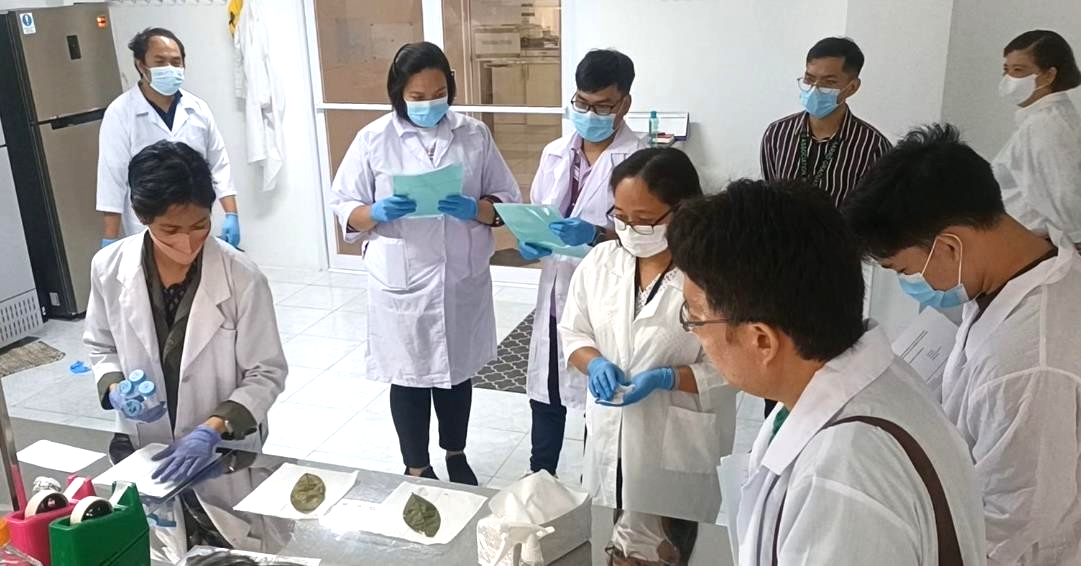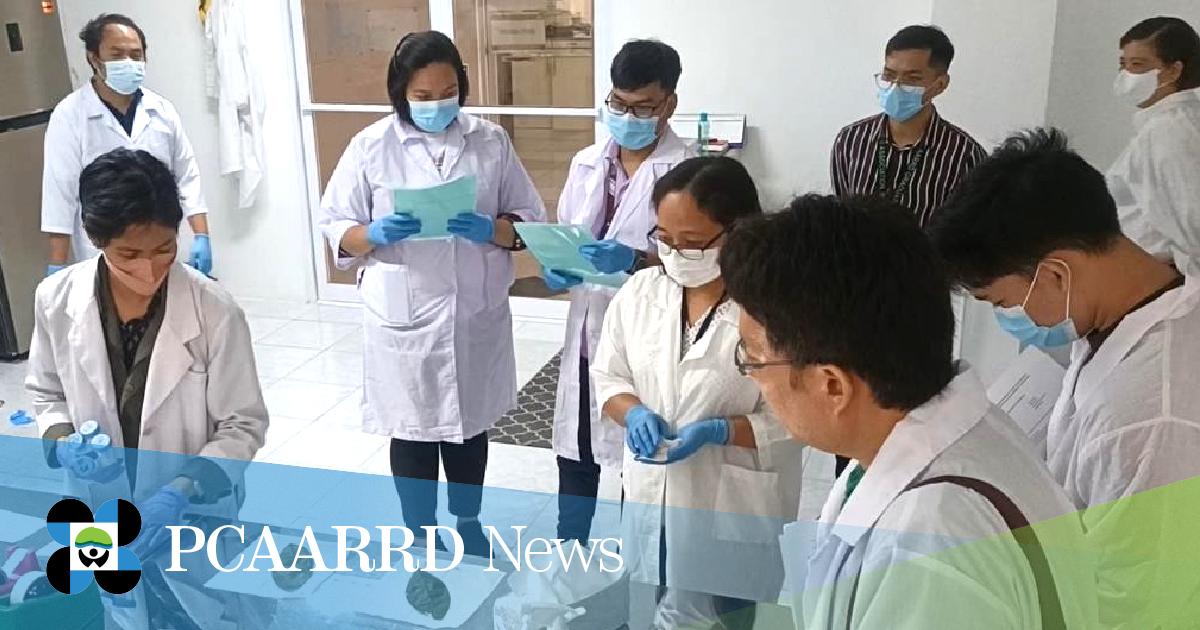
Participants during the workshop on “Molecular Detection Methods for CWSB and CLR Resistance/Susceptibility in Coffee Varieties.” (Image credit: UPD)
Successful field validation of the Coffee White Stem Borer (CWSB) detection system was reported by a recently completed project led by Dr. Ernelea P. Cao of the University of the Philippines Diliman (UPD). This technology can help distinguish resistant from susceptible local coffee varieties to the CWSB.
Funded by the Philippine Council for Agriculture, Aquatic and Natural Resources Research and Development of the Department of Science and Technology (DOST-PCAARRD), the two-year project, “Development of a Detection System for Pest and Disease Resistance in Philippine Coffee Varieties” developed two loop-mediated isothermal amplification (LAMP) technology-based detection systems for CWSB and Coffee Leaf Rust (CLR) disease.
To validate their effectivity, the project team collaborated with the Cavite State University (CvSU) and the Department of Agriculture-Bureau of Plant Industry (DA-BPI) in Baguio to obtain the needed coffee samples for their field validation trials.
According to Dr. Cao, the CWSB detection system demonstrated consistent results in the field with laboratory validation. These findings will aid the team’s future coffee research and development (R&D) initiatives, including subsequent development and field testing of the CWSB early detection strips for direct utilization by local coffee growers.
Meanwhile, the project team plans to further optimize the CLR detection system, which initially detected resistance from ‘Red Bourbon,’ a promising coffee variety commonly grown for its good taste and aroma.
The team also conducted a workshop on molecular detection for CWSB and CLR, which involved 19 participants composed of coffee farmers, agriculturists, and researchers.
Moving forward, the team hopes to strengthen its collaboration with DA-BPI for the improvement of policies and dissemination of the generated information and technologies to coffee growers.

Participants during the terminal project review and evaluation of the project, “Development of a Detection System for Pest and Disease Resistance in Philippine Coffee Varieties.” (Image credit: CRD, DOST-PCAARRD)
Dr. Cao’s team also identified the lack of information on the molecular makeup of Coffea sp. as an important research gap that should be addressed. This will help further understand its resistance mechanism against major insect pests and diseases; hence, coffee researchers are encouraged to conduct the whole genome sequencing of coffee to support and strengthen coffee R&D initiatives.
These outputs were reported via videoconferencing during the project’s terminal review organized by the Crops Research Division (CRD) led by Director Leilani D. Pelegrina and Commodity Specialist for Coffee Fredric M. Odejar.
Also present in the activity were the UPD project team and their accounting office, DOST-PCAARRD Deputy Executive Director for Research and Development (OED-RD) Juanito T. Batalon, Agricultural Resources Management Research Division (ARMRD) Industry Strategic S&T Program (ISP) Manager for Coffee Ma. Teresa L. De Guzman, Technology Transfer and Promotion Division (TTPD) representative Jamie Louise S. Batalon, and Finance and Administration Division (FAD)-Accounting Section Chief Accountant Jaivee Ann M. Tabadero.

